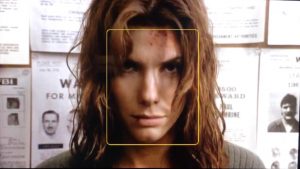
Film Studies Association of Canada Graduate Student Conference, Ottawa, 2019
Abstract: Facial recognition software (FRS) is a symptom of Foucault’s notion of “governmentality,” wherein the State deploys tactics of power, like FRS, as a means to ensure its own self-preservation (102). Giorgio Agamben argues that “by applying these [tactics] to the citizen, or rather, to the human being as such, the State is applying a technological apparatus that was invented for a dangerous class of persons. The State…has made the citizen into the suspect par excellence, to the point that humanity itself has become a dangerous class.” (202); this is supported by the the Centre on Privacy and Technology at Georgetown Law titled “The Perpetual Line-Up” which states that nearly 1 in every 2 U.S. citizens are already in a facial database (Garvie et al, para. 3) and that the most consistent victims of its over- and misapplication are intersectionally-disadvantaged populations. It is clear that the production and processing of portraiture aimed at datafying a population, often under the guise of “objective science” and “public health,” is a practice that most often assumes that population must be controlled and monitored in order to enact governmentality. I will support these claims with a close reading of photos from the NIST Special Database 18 Mugshot Identification Database (1997) through the lens of portraiture; this examination will be further grounded in the 19th century practices of phrenology, physiognomy, eugenics and signaletics and put in combination with Joy Buolowini’s concept of the “coded gaze” as part of her Gender Shades project.